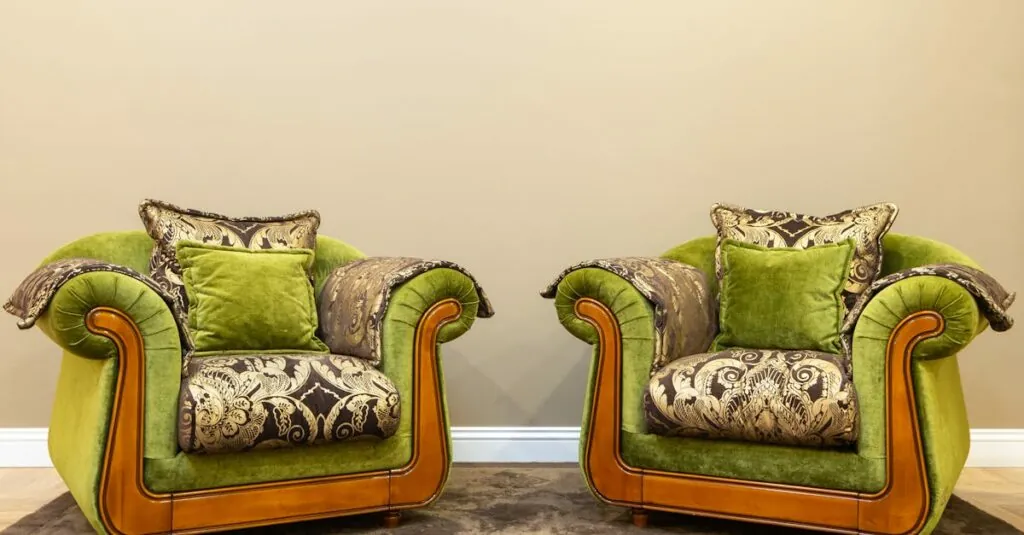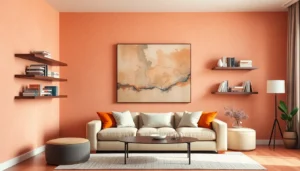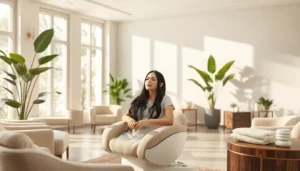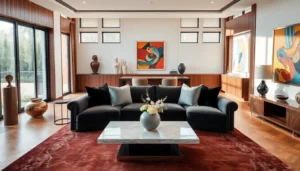Choosing the right furniture tone can feel like a high-stakes game of musical chairs, but it doesn’t have to be a headache. Imagine a room where every piece harmonizes like a well-rehearsed choir, creating a cozy vibe that makes you want to kick off your shoes and stay awhile. That’s the magic of furniture tone pairing—it’s all about finding the right balance between colors, textures, and styles to transform any space into a sanctuary.
Whether you’re a minimalist looking for sleek sophistication or a bohemian at heart craving eclectic charm, mastering the art of tone pairing can elevate your decor game. With a dash of creativity and a sprinkle of humor, anyone can learn to mix and match like a pro. So grab your favorite beverage, and let’s dive into the delightful world of furniture tone pairing, where style meets personality and every room tells a story.
Table of Contents
ToggleUnderstanding Furniture Tone Pairing
Furniture tone pairing balances colors, textures, and styles to create a cohesive feel within a space. This concept allows for personal expression in home decor.
Definition of Furniture Tone Pairing
Furniture tone pairing refers to the combination of different furniture pieces that complement each other through color, texture, and style. It focuses on how these elements work together to enhance the overall aesthetic of a room. Pairing dark wood with light fabrics highlights contrast, while mixing metals brings a contemporary flair. Ultimately, the aim is to achieve a visually appealing and harmonious environment.
Importance of Color and Texture
Color and texture play significant roles in the success of furniture tone pairing. Color impacts mood; warm tones like reds and oranges evoke energy, while cool tones such as blues and greens promote calmness. Textures add depth and interest; combining smooth surfaces with rough materials creates visual contrast. Layering these elements enriches the space, offering an inviting atmosphere that reflects the inhabitant’s personality. Effective color and texture planning can dramatically transform a room’s appeal.
Types of Furniture Tones
Choosing the right furniture tones enhances space appeal. Various types include warm, cool, and neutral tones.
Warm Tones
Warm tones like reds, oranges, and yellows create an inviting atmosphere. These shades energize spaces, making them feel lively and vibrant. Dark woods, such as mahogany and cherry, complement warm colors beautifully. Incorporating warm fabrics, like deep reds or earthy tones, adds texture and depth. Mixing in elements of brass or gold accents can enhance the cozy feel. Spaces designed with warm tones often feel more intimate, encouraging relaxation and conversations.
Cool Tones
Cool tones consist of blues, greens, and purples. They promote a serene and calm environment, perfect for bedrooms and retreat areas. Light woods, such as birch or ash, work well with cooler colors. Textiles in soft blues or gentle greens can bring tranquillity to a room. Combining these colors with silver or chrome details can elevate modern aesthetics. Cool tones create a spacious feel, making rooms appear larger and more expansive.
Neutral Tones
Neutral tones like beige, gray, and taupe offer versatility. These shades serve as a backdrop, allowing other colors to shine. Neutral furniture pairs seamlessly with both warm and cool tones, making it a practical choice. Choosing textured fabrics in neutral shades adds interest without overpowering a space. Accents in wood or metal provide subtle contrast and depth. Designers prioritize neutral tones for creating cohesive and balanced interiors that adapt to various styles.
Creating Harmony with Furniture Tone Pairing
Creating harmony in a space focuses on how furniture tones interact. Color theory and texture balance are key components in this process.
Using Color Theory
Using color theory enhances furniture tone pairing. Warm tones, like reds and oranges, generate energy and create inviting environments. Cool tones, such as blues and greens, evoke tranquility, establishing a calming atmosphere. Neutral tones, including beige and gray, serve as a versatile foundation, allowing vibrant colors to shine without overpowering the space. When pairing tones, consider the room’s intent. For instance, lively hues work well in social areas, while soothing colors benefit relaxation zones. An effective color palette not only improves aesthetics but also reflects personal style.
Balancing Textures
Balancing textures enriches the overall feel of a room. Mixing materials like wood, metal, fabric, and glass adds depth and dimension. For example, pairing the warmth of a wooden table with sleek metal chairs creates contrast that feels inviting. Layering soft textiles, such as a plush rug or cushions, enhances comfort and encourages engagement. It’s crucial to combine smooth and rough textures, as this variety maintains visual interest. Incorporating diverse textures doesn’t overwhelm a space; instead, it fosters a harmonious environment. Thoughtful consideration of texture ensures that a room feels cohesive and stylish.
Tips for Effective Furniture Tone Pairing
Effective furniture tone pairing enhances a space’s visual appeal and atmosphere. By making strategic choices, one can achieve balance and harmony.
Choosing a Focal Point
Selecting a focal point helps guide furniture tone pairing decisions. A vibrant artwork or a striking piece of furniture can serve as the room’s centerpiece. From this point, build around it with complementary tones. If a rich green sofa stands out, consider lighter accent chairs in neutral or cool shades. Incorporating visual anchors creates cohesive designs, ensuring that each piece enhances the overall look rather than competes for attention.
Considering Lighting
Lighting influences how colors and textures appear in a space. Natural light brings out the warmth in wood tones while soft overhead fixtures create a calming atmosphere. Assessing the room’s lighting conditions ensures optimal tone selection. Choosing lighter fabrics can brighten areas that lack natural light, while deeper tones work well in sunlit spaces. When pairing furniture, always account for the light’s effect on each element, which helps achieve the desired ambiance.
Mastering furniture tone pairing can elevate any space into a stunning reflection of personal style. By thoughtfully combining warm, cool, and neutral tones along with varied textures, individuals can create an inviting atmosphere that resonates with their unique tastes. The art of mixing and matching allows for creativity while ensuring harmony throughout the room.
Embracing the principles of color theory and texture balance not only enhances visual appeal but also contributes to the overall functionality of a space. With careful consideration of focal points and lighting, anyone can transform their home into a cozy sanctuary that feels both stylish and welcoming.






